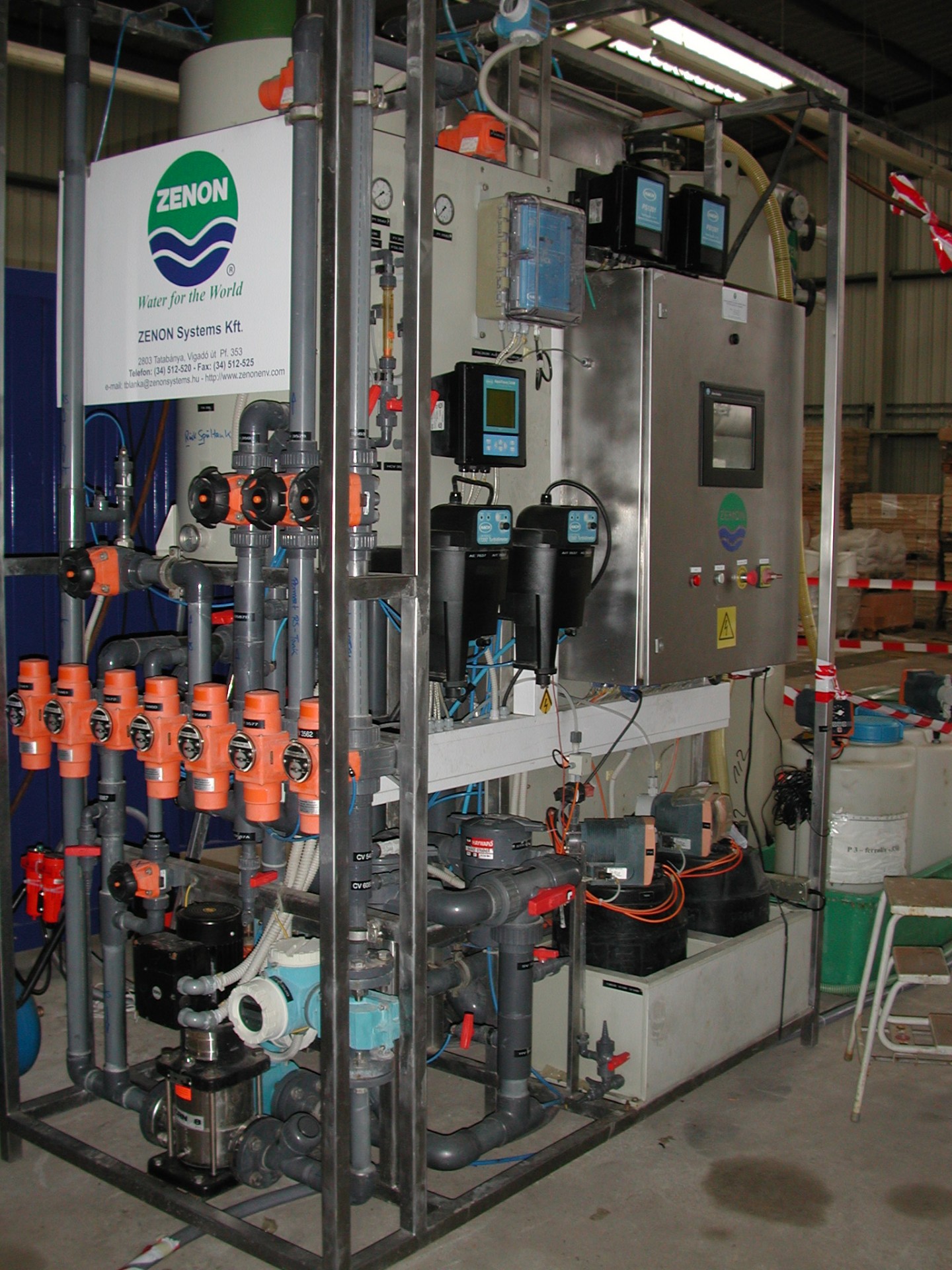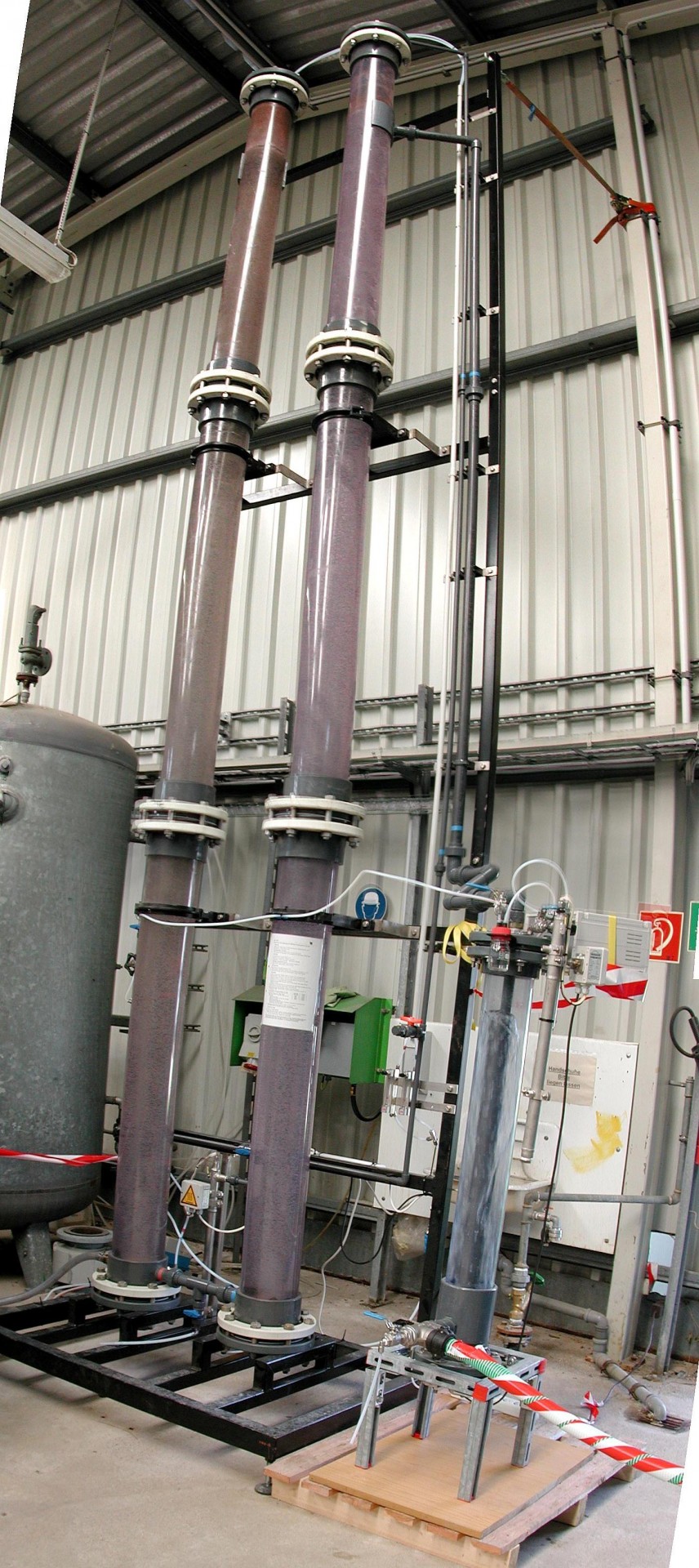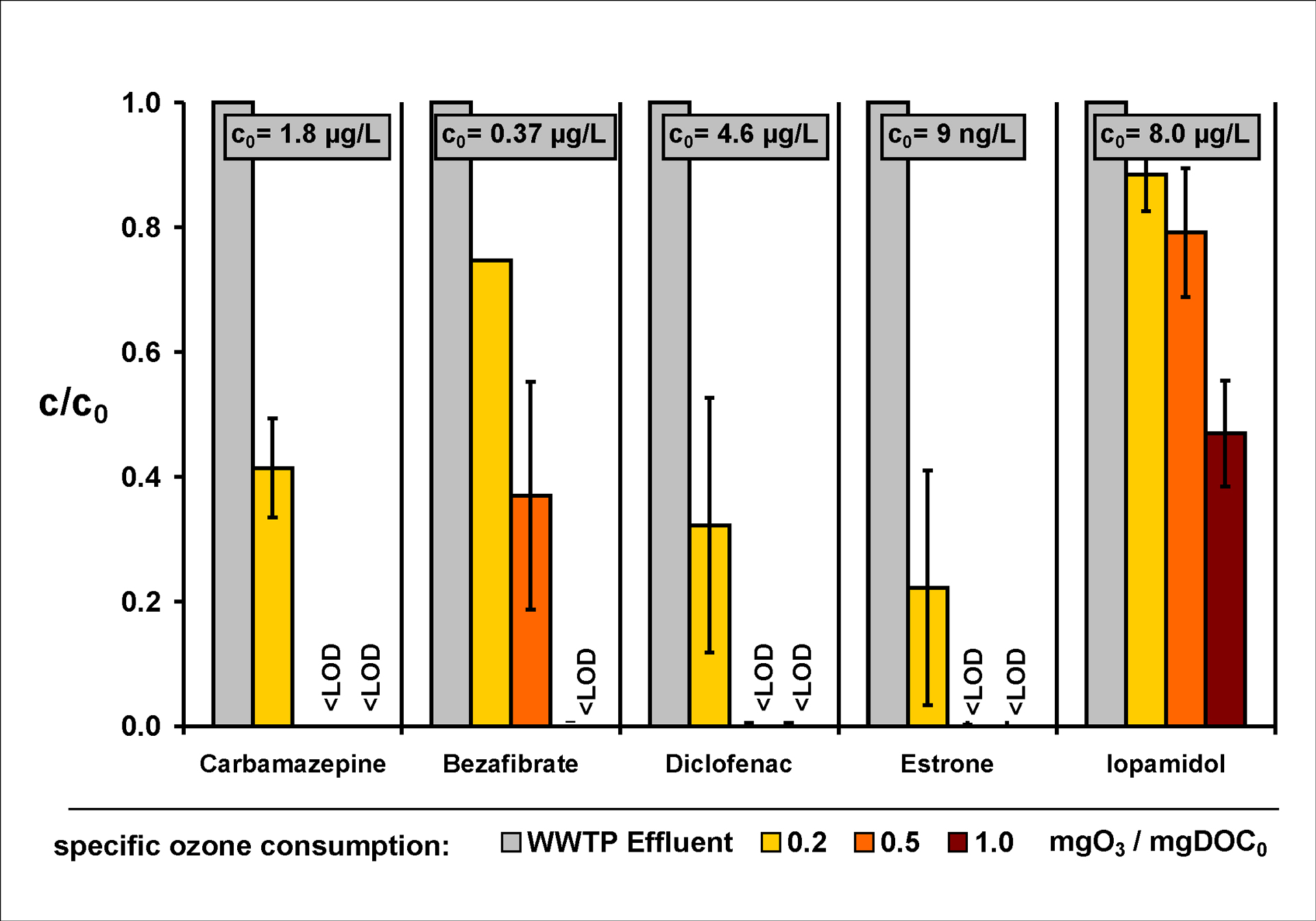The treated municipal wastewater may contain pathogenous micro-organisms and persistent trace organics leading to problems when discharged into the surface waters. In the scope of the research project PILOTOX, several tests have been performed with a pilot plant by the company WEDECO, aiming at the ozonation of the effluent.
The tests have demonstrated that ozonation is a suitable procedure to remove and to transform respectively, substantial quantities of pharmaceutical residues and, at the same time to disinfect the treated effluent. All neutral and acid pharmaceutical substances and metabolites examined, have been eliminated entirely at a specifically high ozone dosage of 1,2 mg O3/mg DOC0.
The neutral pharmaceuticals (the analgetica phenazone and propyphenazone as well as the enti-epilepticum carbamazepin) and several other acid pharmaceuticals (naproxene, diclofenac) have been removed at a low ozone dosage of 5 mg/LO3 to below their analytic detection limit. On the other hand, the lipid-lowering agents bezafibrate and clofibric acids have been removed at a slightly higher ozone dosage. The steroid hormones ethinylestradiol and estradiol have proven to be very sensitive to the ozone process and have been oxidated at very low O3 concentrations. The X-ray contrast media however, have turned out to be more resistant: even at a high ozone dosage, their concentrations have been reduced to some extent only. In this context, it has been detected that through the combination of H2O2 and ozone, an elevated elimination rate for the substances iopamidol and iohexol can be achieved.
The disinfection of the treated effluent to below the limit values stipulated in the EU Bathing Water Directive, has become feasible by means of an ozone dosage of 10 mg/LO3. In view of the parameters total coliformes and faecal coliformes, a bacterial contamination has recurred which is however, moderated if the effluent mixes with the Spree river water, since in this case the limit values of the EU Bathing Water Directive are not exceeded. In addition, the transformation from bromide to bromate has been observed when high ozone concentrations have been applied. The toxicity tests performed have revealed that no oxidation products are generated which are of any eco-toxicological relevance.
Block error: "Call to a member function intendedTemplate() on null" in block type: "references"
- Pilot scale ozonation of treated municipal effluent for removal of pharmaceutical compopunds and pathogens
- UVA as control parameter for the effective ozonation of organic poolutants in secondary effluent
- Pilotuntersuchungen zur kombinierten oxidativ-biologischen Behandlung von Klärwerksabläufen für die Entfernung von organischen Spuren- und Wirkstoffen und zur Desinfektion






